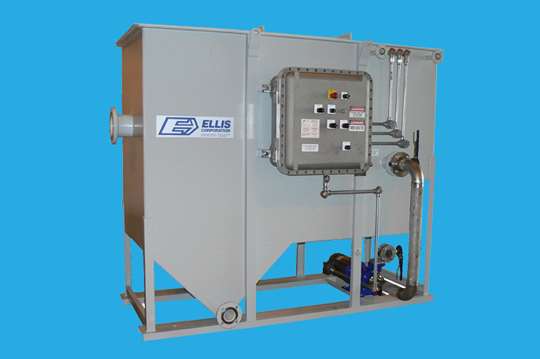Oil Water Separator
Why Separate Oil for Waste Streams
There are many reasons to separate oil from waste streams. Recovering oils from waste streams can be used as a bi-product or another revenue stream if the oils have value. De-watering the waste stream can also lead to reduced waste hauling charges or even allow them to be land applied. Ellis’s performance-proven oil water separators are made with the highest quality at our own manufacturing facilities. No matter what the application, there is a world of liquids and solids to be separated.
The EllisLudell Oil Water Separator (OWS) has been engineered to deliver the best quality separation at lowest O&M cost. The OWS has been engineered with no moving parts. Operating and Maintenance costs are minimized while efficiency is maximized with a simplistic design.
Other technologies can be expensive, noisy, energy consumptive, and unreliable. Designed to API 421 and 620 standards, EllisLudell engineers will work to select the best model and materials of construction to maximize oil separation.
Oil coalescing media packs are available in different materials to best suit the application needs of cost, wastewater temperature, corrosion resistance, and chemical compatibility.

Conventional Oil-Water Separators Can only remove Free Oil
Stable emulsions and dissolved oil require additional treatment.
One may wonder, what exactly causes the oil to coalesce inside the media pack?
The simple answer lies within Stoke’s Law. The law suggests that the only practical parameter to influence the oil separation rate is the oil droplet size. By doubling the size of the oil droplet, we increase the rise/separation rate.
How can EllisLudell make oil droplets bigger without adding chemicals or additional heat inside the OWS?
The answer is, again, simple: a specially designed EllisLudell media pack. The coalescing media material is usually made from oleophilic material that is assembled in a crisscross honeycomb fashion. As the oily feed travels through the pack, different flow paths collide, and the oil particles stick together and grow in size. Any heavy solids that are too dense to make this upward path will inherently slide back down through the pack into the sludge chamber and be removed from the bottom.
EllisLudell offers coalescing media packs constructed of stainless steel and PVC. Conventional oil-water separators can only remove free oil. Stable emulsions and dissolved oil require additional treatment.
Product Features
-
Pre-Assembled at Factory Reducing On-Site Installation Time
-
3/16” Thick Carbon Steel Construction
-
Exterior Protection Polyurethane Enamel Paint
-
Coal Tar Coating for interior protection against corrosion
-
Removable ¾” spacing PVC Coalescing Media Packs
-
Covers with Gaskets.
-
Adjustable Weirs for Maximum Oil Separation
Oil Water Separator System Performance
- Removes Free Floating Oils and Settleable Solids
- Removes 99% of Free-Floating Oils 20-micron sized hydrocarbons and larger
- Produces effluent down to 10 mg/L or less.
Types of Oil Removed
Motor oils, Fuels (vehicle/jet), Fuel oils, Hydraulic fluids, Immiscible machining oils, Lube oil, Transmission fluid, Bunker c, DNAPL, LNAPL, Vegetable-based oils, Crude oil, Air compressor lubricants and other Hydrocarbon based derivatives (BTEX etc.).
Optional Equipment
-
OWS Stainless Steel Construction
-
Removable Stainless Steel Coalescing Media Packs
-
Media spacing options
-
Pumping package – Inlet, Outlet, Solids Removal & Oil Removal
-
Walkways with Guard Rails and Stairs or Ladders
-
Auger Solids Removal
-
Control Cabinet
-
Freeze Protection, Immersion Heater
-
Flow Meter
-
Level Controls
Applications
-
Centralized Wastewater Treatment
-
Hazardous Waste Treatment
-
Refineries
-
Vehicle Wash Racks
-
Industrial Process Water
-
Groundwater Remediation
Applications
-
Steel Mills
-
Tank Farms
-
Petro-Chemical
-
Shipping Ballast and Bilge Water
-
Power Generation
-
Heat Treating
